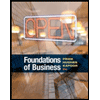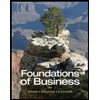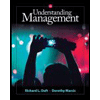
Principles of Management
OER 2019 Edition Edition
ISBN: 9780998625768
Author: OpenStax
Publisher: OpenStax College
expand_more
expand_more
format_list_bulleted
Question
Provide an overview of the tools and technology that were used to define IT project management??
Expert Solution
This question has been solved!
Explore an expertly crafted, step-by-step solution for a thorough understanding of key concepts.
This is a popular solution
Trending nowThis is a popular solution!
Step by stepSolved in 2 steps

Knowledge Booster
Similar questions
- What do you think are some of the difficulties of adding 25 percent more employees for the holiday season? what kind of planning do you think would be needed?arrow_forwardWhat did you learn about some of the real benefits and limitations of planning by watching this video?arrow_forwardBriefly describe the two views of the goal formulation process, and explain how they differ.arrow_forward
- What questions may be used to guide OD and change management?arrow_forwardCreate a Group Control System Step 1. From into groups of three to five students. Each group will assume that another student group has been given an assignment of writing a major paper that will involve research by individual group members that will be integrated into the final paper. Each group member has to do his or part. Step 2. Your assignment is develop a list of rules and identify some statistics by which to control the behavior of members in that group. Brainstorm and discuss potential to govern member behavior and consequences for breaking those rules. Step 3. First, select the five rules that you think are most important for governing group member behavior. Consider the following situations that rules might cover; arriving late for a meeting: missing a meeting: failing to complete a work assignment; disagreements about desired quality of work; how to resolve conflicts about paper content; differences in participation , such as one person doing all the talking and someone else talking hardly at all; how to handle meetings that start late; the use of an agenda and handling deviations from the agenda; and any other situation that your group a cover. Step 4. Now consider what statistics could be developed to measure the behavior and outcome of the group pertaining to those five rules. What kinds of things could be counted to understand how group is performing and whether members are the following rules? Step 5. Discuss the following questions. Why are rules important as a means of control? What are the advantages and disadvantages of having many rules (hierarchical control) versus few rules (decentralized control) for a student group? How can statistics help a group ensure? appropriate behavior and a high-quality product? Step 6. Be prepared to present your conclusions to the Class.arrow_forwardWhat are the common models of OD and change management?arrow_forward
- Why might it be a bad decision to hire someone for a key startup role based only on the fact that the person is close family or a friend? What are the potential tradeoffs to the business?arrow_forwardCreate a Group Control System Step 1 Form into groups of three to five students. Each group will assume that another student group has been given an assignment of writing a major paper that will involve research by individual group members that will be integrated into the final paper. Each group member has to do his or her part. Step 2 Your assignment is to develop a list of rules and identify some statistics by which to control the behavior of members in that group. Brainstorm and discuss potential rules to govern member behavior and consequences for breaking those rules. Step 3. first, select the five rules that you think are most important for governing group member behavior. Consider the following situations that rules might cover: arriving late for a meeting; missing a meeting; failing to complete a work assignment; disagreements about desired quality of work; how to resolve conflicts about paper content; differences in participation, such as one person doing all the talking and someone else talking hardly at all; how to handle meetings that Start late; the use of an agenda and handling deviations from the agenda; and any other situation that your group thinks a rule should cover that your group thinks a rule should cover.arrow_forwardDefine and describe the different types of plans defined in Table 17.1 and how organizations use them.arrow_forward
arrow_back_ios
SEE MORE QUESTIONS
arrow_forward_ios
Recommended textbooks for you
 Management, Loose-Leaf VersionManagementISBN:9781305969308Author:Richard L. DaftPublisher:South-Western College Pub
Management, Loose-Leaf VersionManagementISBN:9781305969308Author:Richard L. DaftPublisher:South-Western College Pub Foundations of Business (MindTap Course List)MarketingISBN:9781337386920Author:William M. Pride, Robert J. Hughes, Jack R. KapoorPublisher:Cengage Learning
Foundations of Business (MindTap Course List)MarketingISBN:9781337386920Author:William M. Pride, Robert J. Hughes, Jack R. KapoorPublisher:Cengage Learning Foundations of Business - Standalone book (MindTa...MarketingISBN:9781285193946Author:William M. Pride, Robert J. Hughes, Jack R. KapoorPublisher:Cengage Learning
Foundations of Business - Standalone book (MindTa...MarketingISBN:9781285193946Author:William M. Pride, Robert J. Hughes, Jack R. KapoorPublisher:Cengage Learning Practical Management ScienceOperations ManagementISBN:9781337406659Author:WINSTON, Wayne L.Publisher:Cengage,
Practical Management ScienceOperations ManagementISBN:9781337406659Author:WINSTON, Wayne L.Publisher:Cengage, Understanding Management (MindTap Course List)ManagementISBN:9781305502215Author:Richard L. Daft, Dorothy MarcicPublisher:Cengage Learning
Understanding Management (MindTap Course List)ManagementISBN:9781305502215Author:Richard L. Daft, Dorothy MarcicPublisher:Cengage Learning


Management, Loose-Leaf Version
Management
ISBN:9781305969308
Author:Richard L. Daft
Publisher:South-Western College Pub

Foundations of Business (MindTap Course List)
Marketing
ISBN:9781337386920
Author:William M. Pride, Robert J. Hughes, Jack R. Kapoor
Publisher:Cengage Learning

Foundations of Business - Standalone book (MindTa...
Marketing
ISBN:9781285193946
Author:William M. Pride, Robert J. Hughes, Jack R. Kapoor
Publisher:Cengage Learning

Practical Management Science
Operations Management
ISBN:9781337406659
Author:WINSTON, Wayne L.
Publisher:Cengage,

Understanding Management (MindTap Course List)
Management
ISBN:9781305502215
Author:Richard L. Daft, Dorothy Marcic
Publisher:Cengage Learning